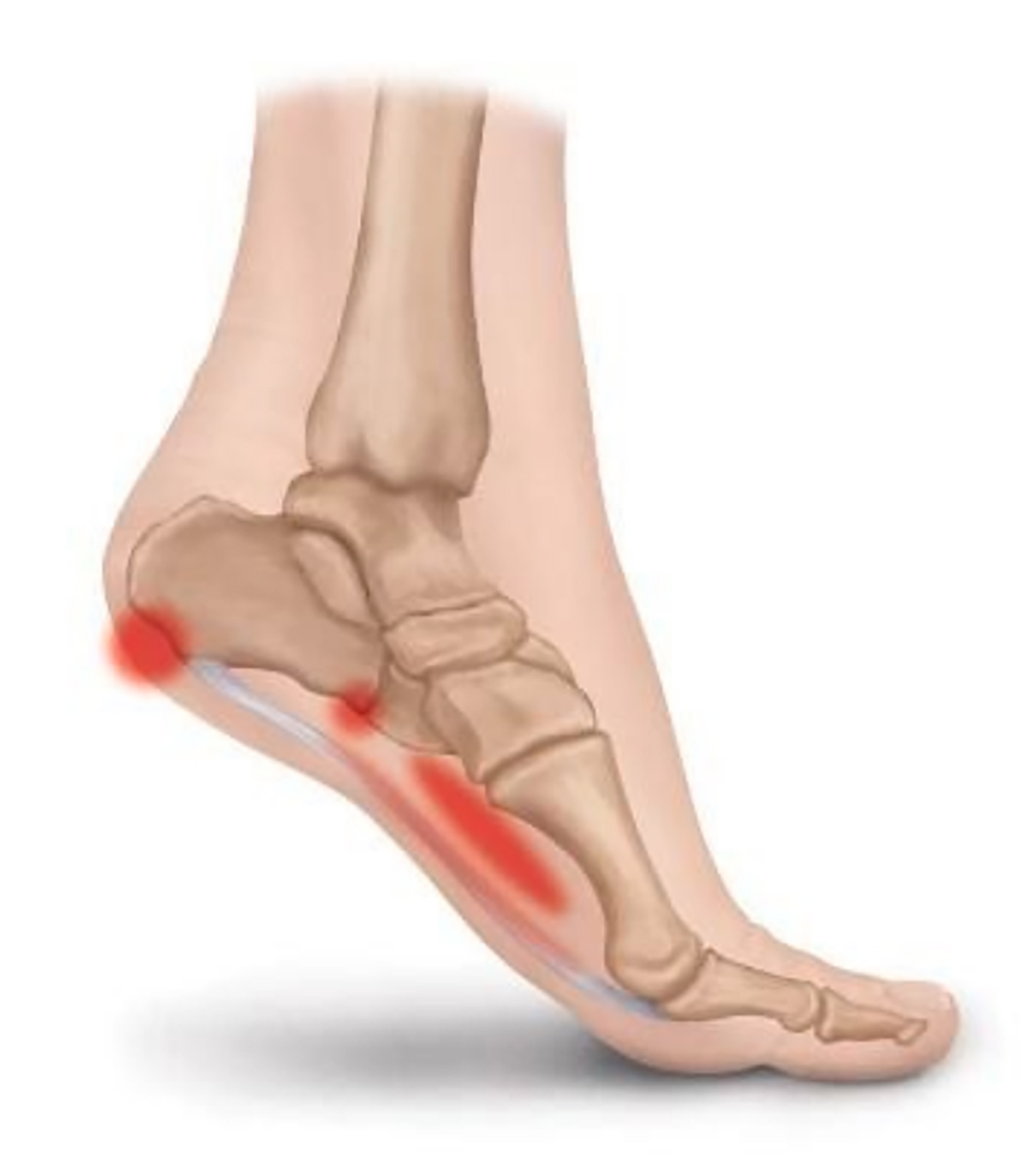Walking was once enjoyable, now you dread the thought of it.
At the park, you’re looking for the nearest chair so you don’t have to stand.
You have become hesitant to run on the TART trail or play with your kids.
Shoes become a necessity, even in the summer!
Just knowing how painful the first few steps are going to be in the morning nearly keeps you in bed. You miss the days of going for a walk at the Empire Bluffs trail, Pyramid Point, or enjoying walking down on Front Street.
If any of this sounds like you, it is likely you have plantar fasciitis, a very common condition and one we see often.
We hope this article offers some guidance on your pursuit of returning to activities that bring you joy, and getting rid of that foot pain!
What is Plantar Fasciitis?
 Plantar fasciitis is a condition that develops when there is an increased strain on the plantar fascia, a thick band of tissue that supports the arch of the foot.
Plantar fasciitis is a condition that develops when there is an increased strain on the plantar fascia, a thick band of tissue that supports the arch of the foot.
This strain causes irritation and tis sue to breakdown over time, which can cause a lot of pain.
The plantar fascia plays an important role in supporting the arch of the foot. When standing, walking, jumping, and running the plantar fascia must work harder to support the arch of the foot, which is why it tends to hurt with these activities.
Common Signs and Symptoms
You might feel a stabbing pain, or a dull tightness/tenderness on the underside of the foot and/or heel.
You may experience pain with standing for a long time, walking barefoot, walking for a long time, running and jumping. You may notice you are limping due to the pain. Sound familiar?
What causes Plantar Fasciitis?
We call this the million-dollar question and one we take very seriously.
You now know that plantar fasciitis is irritation and strain of the plantar fascia of the foot, so how does that happen?
Remember, the plantar fascia supports the arch.
The question is, what else in the body assists the plantar fascia in supporting the arch?
This is often where the “cause” lies. The truth is, the powerful muscles that attach to the hips (glutes, hamstrings, hip flexors) play a huge role in supporting the foot.
If these muscles become stiff or weak, they will no longer be able to efficiently support the foot. This places more stress on the plantar fascia, because inadequately assisting the foot.
Here, we have some of our favorite “hip opener” exercises for you to try. (link to vimeo video of hip stretches) This is often why plantar fasciitis can linger! Pain is not uncommon if the hips and attaching muscles “up the chain” are ignored when thinking about plantar fasciitis.
How will we Diagnose?
Each person who comes to Pursuit Physical Therapy for a diagnosis will notice our unwavering desire to remove the guesswork. We will perform a detailed and customized examination to accurately diagnose. Our formula for plantar fasciitis is as follows:
- Q&A – we listen to your story – This will guide our next steps
- Detailed observation and analysis of foot/ankle flexibility and strength
- Detailed observation and analysis of hip flexibility and strength
Based on our findings from the customized examination we will have a good understanding of why the plantar fascia is in pain, what likely caused it, and what we can do about it.
I want to find out why my plantar fascia hurts and what I can do about it.
How can we help?
The process we follow here at Pursuit Physical Therapy is simple and effective.
- First and foremost – reduce the pain
- Find the true cause and fix it – No Guesswork
- Implement a long-term solution, so you can return to your activities
Using our training from the world-renowned Gray Institute, we have learned how to assess and diagnose from the best in the world.
We are very confident in our ability to find the true cause of your pain and implement strategies to fix it for good.
We’re committed to being honest, detailed, and personalized.
You deserve a plan that applies to you as an individual, not a cookie cutter program. This is our promise, and this is how we achieve optimal outcomes.
I want a personalized plan for fixing my Plantar Fasciitis. (link to lets get started)
What is my next step?
In order to know how to fix it, you need to know what caused it!
Once we have an idea of what caused it, we can streamline your time and energy on what you would most benefit from.

